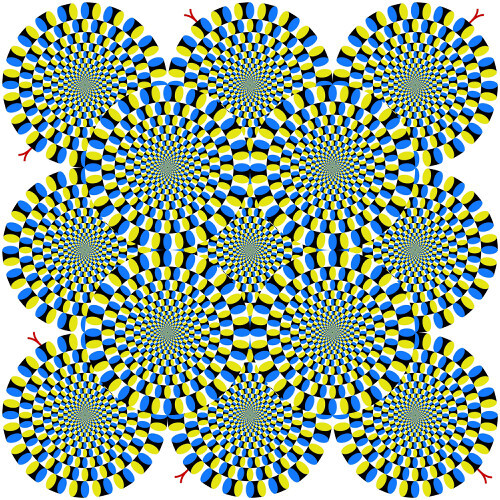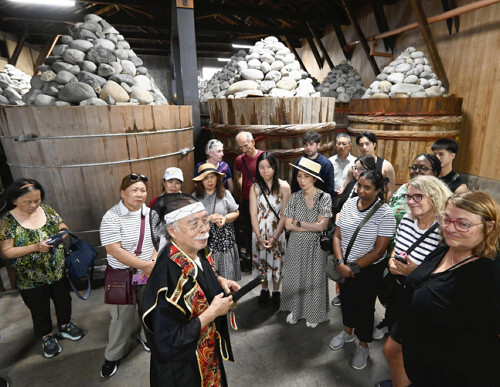
By Will Dunham
(Reuters) -A clay figurine about 12,000 years old that was unearthed at the site of a prehistoric village overlooking the Sea of Galilee in northern Israel depicts a woman and a goose in what may be one of the world's oldest renderings of a mythological scene.
Researchers said the figurine, about 1.5 inches (3.7 cm) tall, was discovered inside a semicircular stone structure about 16 feet (5 meters) in diameter at a site called Nahal Ein Gev II. The village was part of the Natufian culture of Southwest Asia, which straddled the prehistoric transition between nomadic hunter-gatherers and settled agriculturally based communities.
It is the earliest-known figurine worldwide showing human interaction with an animal, according to Laurent Davin, a postdoctoral researcher in archaeology at the Hebrew University of Jerusalem and lead author of the study published on Monday in the journal Proceedings of the National Academy of Sciences. It is also the oldest-known naturalistic, rather than stylized, portrayal of a woman in art from Southwest Asia, Davin said.
The goose is positioned on the crouching woman's back with its wings spread in a typical mating posture. The scene offers insight into this prehistoric culture's belief system, Hebrew University archaeologist and study co-author Leore Grosman said.
"We interpreted the interaction scene as the depiction of the imagined mating between an animal spirit and a human. This theme is very common in animistic societies across the world in specific situations such as erotic dreams, shamanistic visions and myths," Grosman said.
Animism is a belief system holding that natural things - living organisms such as plants and animals and inanimate objects like rocks and rivers - possess a spiritual essence.
"The scene itself - depicting a sexualized interaction between a human and an animal - is part of a long tradition in myth. Such imagery is rarely meant to be literal. Instead, it often symbolizes fertility, spiritual beliefs or the sacredness of life," University of Connecticut anthropologist and study co-author Natalie Munro said.
"In many myths across history and cultures, gods or beings take on hybrid human-animal forms to convey symbolic meanings, not actual sexual activity," Munro said.
The figurine appears to be the oldest example of a mythological scene in Southwest Asia and one of the oldest worldwide, but is younger, for example, than an apparent mythological scene among the Lascaux Cave paintings in France dating to roughly 18,000 years ago, the researchers said.
The figurine was sculpted from clay that was allowed to dry before being fired to make it durable, and later was colored with a red pigment, traces of which survive. A fingerprint of the sculptor can be seen on the figurine.
The object showcases new artistic innovations for its time. The sculptor used light and shadow to create a sense of depth and perspective, methods that would fully flourish much later.
"Given the way it was modeled, with an emphasis on its left profile, we know that this figurine was probably displayed in a particular spot to receive light, from the sun or a fireplace, on its left profile to reveal the play of light and shadows that brings to life the interaction between the goose and the woman," Davin said.
Such figurines may have served as ornaments, amulets with magical or protective properties or as props to tell stories. This one may have been part of a staged installation that village inhabitants would come to observe, Davin said.
At some point, it was buried in the fill of the structure where the researchers found it along with other objects possessing ritual meaning such as a cache of human teeth and the remains of a child.
The Natufian culture's people were the first hunter-gatherers in Southwest Asia to adopt a sedentary lifestyle, a dramatic transformation that predated the embrace of farming. This village's inhabitants hunted gazelles, practiced elaborate crafts including weaving and collected raw materials nearby such as flint and limestone.
The site bore remains of geese, with evidence of hunting, butchering and feather use. Notably, the figurine's scene was unrelated to hunting.
"The implication of this discovery," Grosman said, "is that the sedentary lifestyle generated major transformations in social structures - both between humans and between humans and their surrounding environment - which then led to major transformations in storytelling, symbolic expression and artistic techniques."
(Reporting by Will Dunham in Washington; Editing by Daniel Wallis)
latest_posts
- 1
 2024 Watch Gathering: The Best Watches of the Year
2024 Watch Gathering: The Best Watches of the Year - 2
 David Duchovny's new thriller has him stripping down at 65. But its chilling premise hits close to home.
David Duchovny's new thriller has him stripping down at 65. But its chilling premise hits close to home. - 3
 Exemplary Fragrances: A Manual for Notorious Scents
Exemplary Fragrances: A Manual for Notorious Scents - 4
 5 Great and High Evaluated Scene Configuration Administrations For 2024
5 Great and High Evaluated Scene Configuration Administrations For 2024 - 5
 中村橋之助と婚約、梨園の妻に!元乃木坂・能條愛未ってどんな人? 幼少期から演技習い、舞台中心に活躍(スポニチアネックス)
中村橋之助と婚約、梨園の妻に!元乃木坂・能條愛未ってどんな人? 幼少期から演技習い、舞台中心に活躍(スポニチアネックス)
 'Pluribus' release date: Everything you need to know about the new series from 'Better Call Saul's' co-creator
'Pluribus' release date: Everything you need to know about the new series from 'Better Call Saul's' co-creator 大谷翔平「伝説的瞬間」賞受賞 リーグ優勝決定シリーズ第4戦の3本塁打、10奪三振(日刊スポーツ)
大谷翔平「伝説的瞬間」賞受賞 リーグ優勝決定シリーズ第4戦の3本塁打、10奪三振(日刊スポーツ) Instructions to Perceive and Grasp the Early Side effects of Cellular breakdown in the lungs
Instructions to Perceive and Grasp the Early Side effects of Cellular breakdown in the lungs ADOR「NewJeansヘリン&ヘインが復帰…温かい応援をお願いしたい」(朝鮮日報日本語版)
ADOR「NewJeansヘリン&ヘインが復帰…温かい応援をお願いしたい」(朝鮮日報日本語版) Journey Lines for Each Explorer: Track down Your Ideal Journey
Journey Lines for Each Explorer: Track down Your Ideal Journey AIも惑う、脳の勘違い「錯視」…特性生かした商品開発も(読売新聞オンライン)
AIも惑う、脳の勘違い「錯視」…特性生かした商品開発も(読売新聞オンライン) 大谷翔平、3年連続シルバースラッガー賞受賞 イチロー超えの日本人最多4度目、シュワーバー下す(Full-Count)
大谷翔平、3年連続シルバースラッガー賞受賞 イチロー超えの日本人最多4度目、シュワーバー下す(Full-Count) Taco Bell debuts its Baja Blast pie, and the reactions may surprise you
Taco Bell debuts its Baja Blast pie, and the reactions may surprise you みそ汁「うまみがある」外国人が感嘆、郷土の発酵食品で観光誘客「発酵ツーリズム」広がる(読売新聞オンライン)
みそ汁「うまみがある」外国人が感嘆、郷土の発酵食品で観光誘客「発酵ツーリズム」広がる(読売新聞オンライン)













